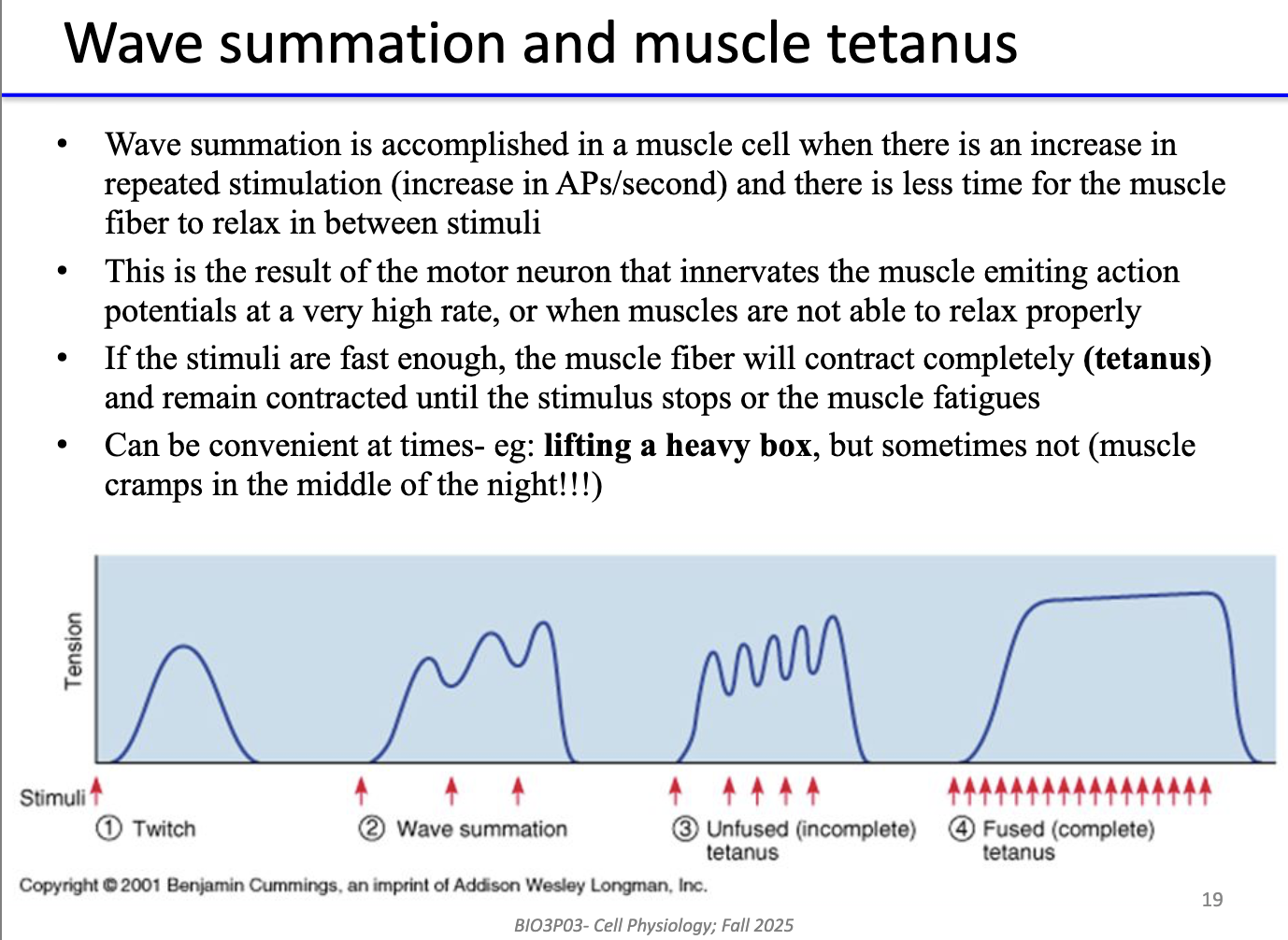14. Synaptic Integration Part 1-Postsynaptic potentials
1/13
There's no tags or description
Looks like no tags are added yet.
Name | Mastery | Learn | Test | Matching | Spaced |
|---|
No study sessions yet.
14 Terms
How does synaptic integration occur in the CNS and how does it differ from the neuromuscular junction?
CNS neurons communicate via chemical synapses (like neuromuscular junctions).
Each CNS neuron receives thousands of excitatory & inhibitory inputs.
Muscle cells: innervated by only one motor neuron → no integration needed.
CNS neurons must integrate all inputs to determine output (firing).
Knowledge of synaptic integration largely from alpha motor neurons in vertebrate spinal cord.
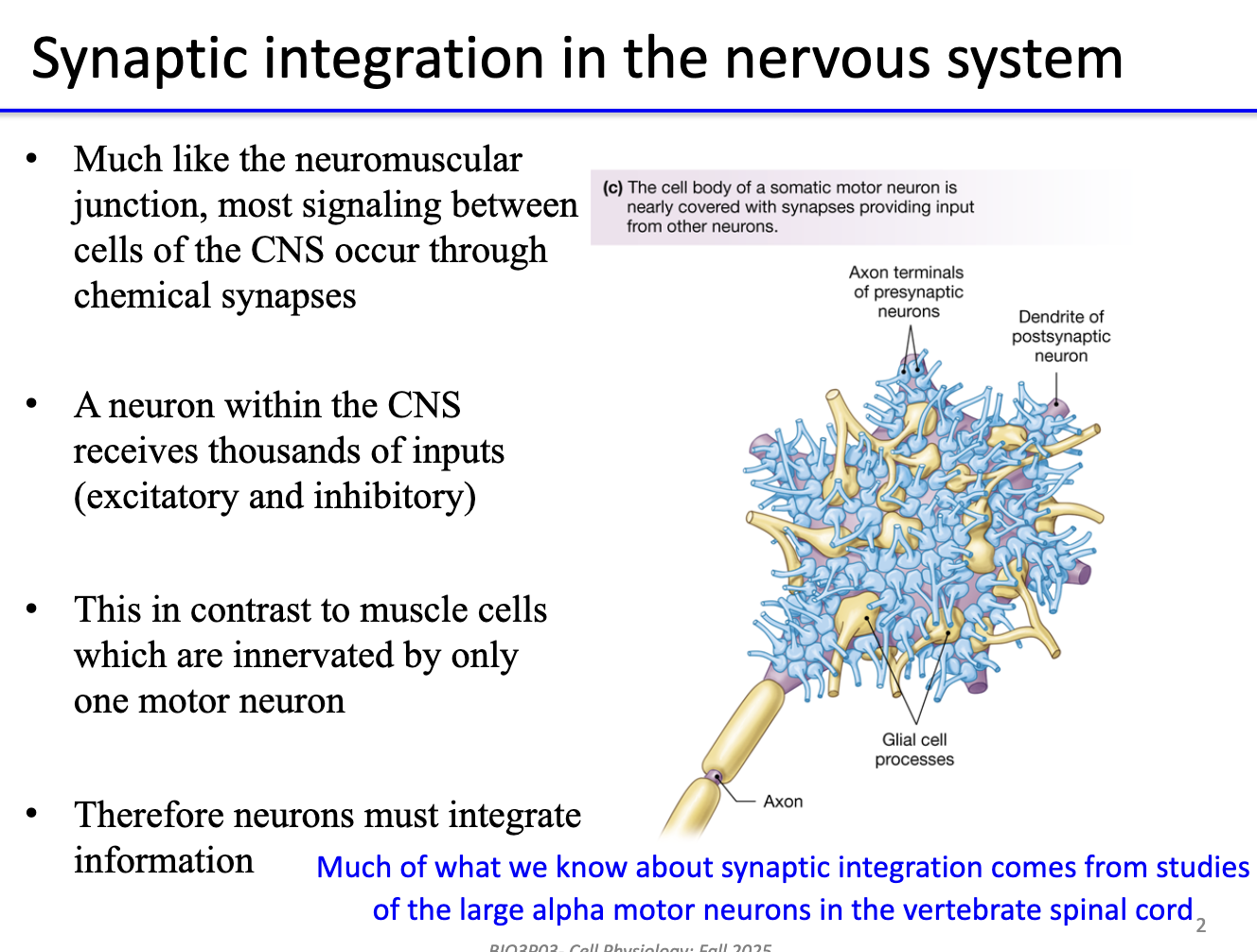
What are the main synapse types in the CNS, and how might axo-axonic synapses influence action potential generation?
Axosomatic: axon → soma.
Axodendritic: axon → dendrite.
Axo-axonic: axon → another axon.
Axo-axonic synapses can modulate neurotransmitter release from the presynaptic terminal → influence AP generation indirectly (by enhancing or inhibiting transmitter release).
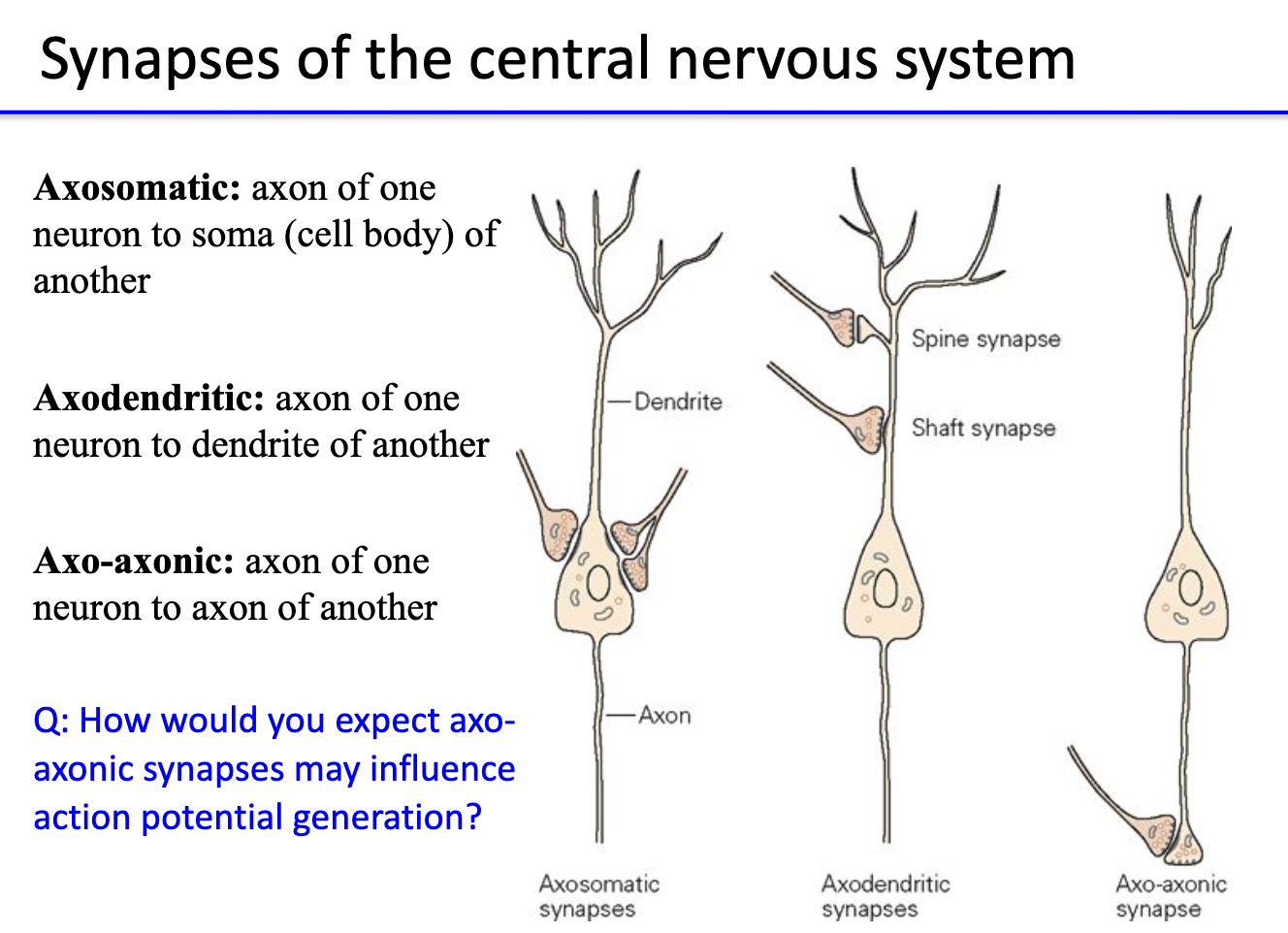
What is the function of inhibitory synapses?
Inhibitory synapses prevent the postsynaptic neuron from firing an action potential.
They hyperpolarize or stabilize the membrane potential below threshold.
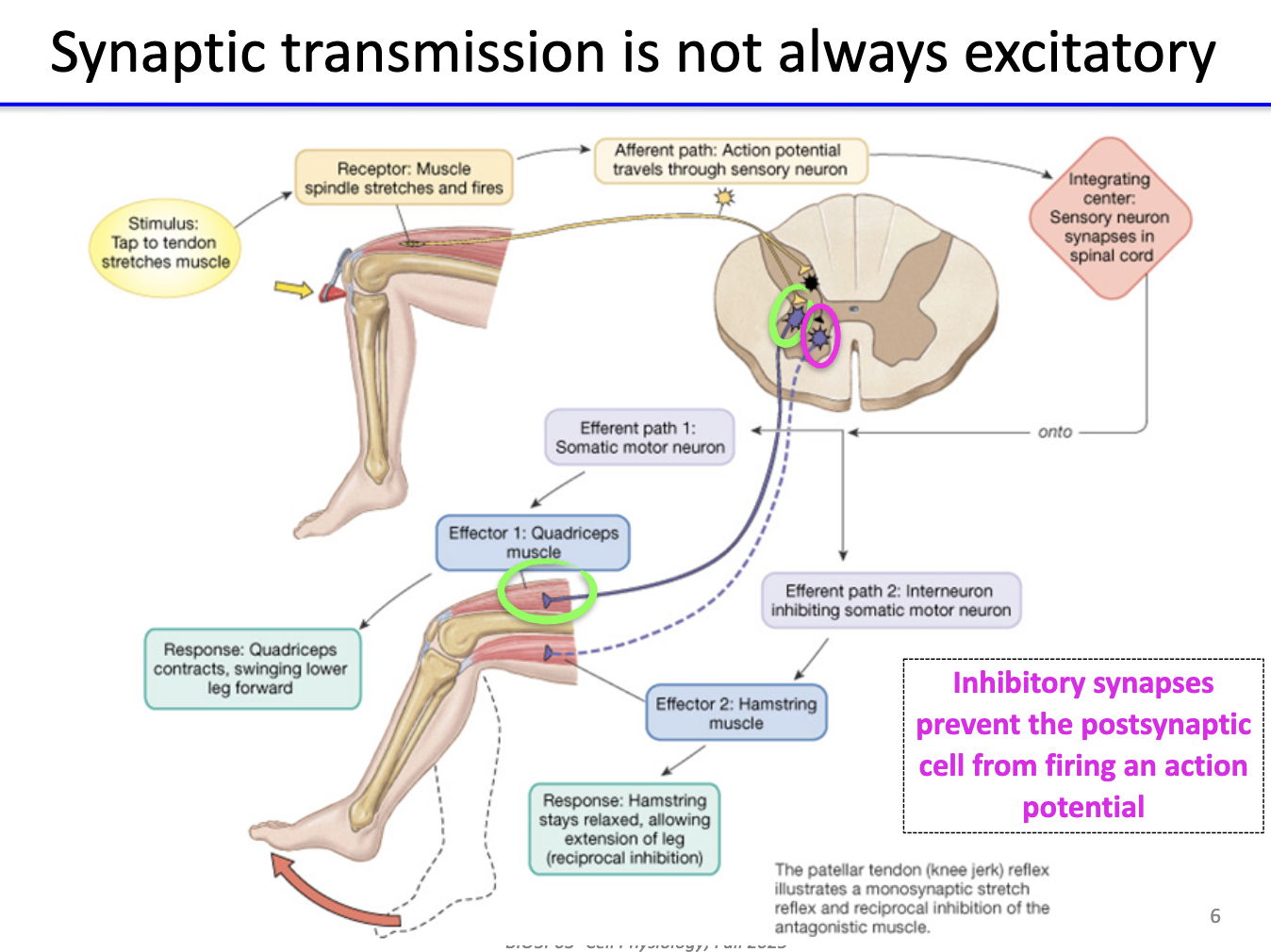
How can excitatory transmission be studied in the knee-jerk reflex?
Stimulate one sensory neuron → single EPSP in motor neuron (below threshold).
Stimulate many sensory neurons → EPSPs sum, larger depolarization → reach threshold → action potential in motor neuron.
Demonstrates summation of excitatory inputs.
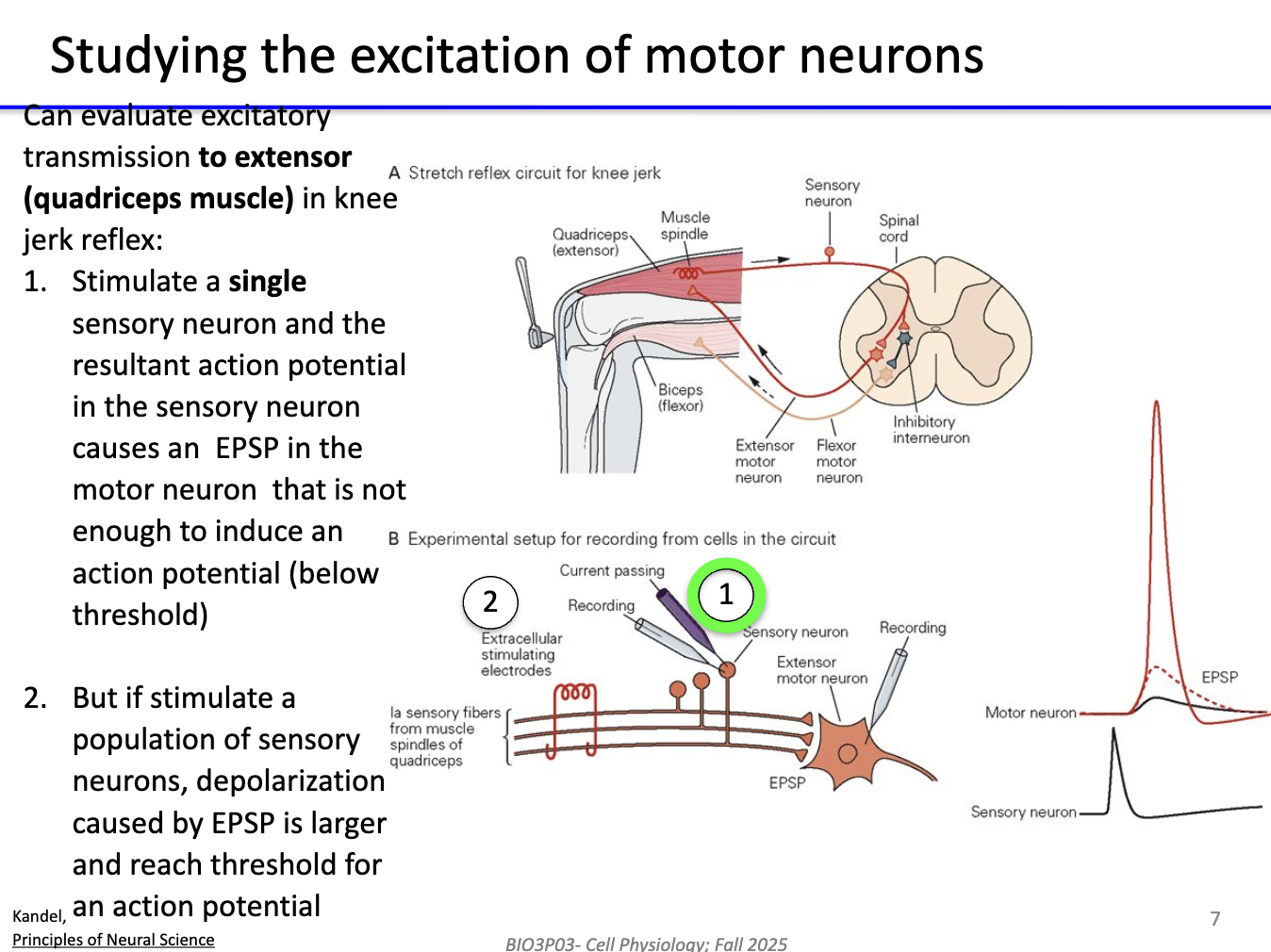
How can inhibition of motor neurons be studied in the flexor (hamstring) muscle?
Inhibition studied via flexor muscle (biceps femoris) pathway.
Stimulate a single inhibitory interneuron → produces a small IPSP (slight hyperpolarization) in motor neuron.
Stimulate multiple sensory neurons → activates many inhibitory interneurons → results in a larger IPSP (greater hyperpolarization).
Demonstrates summation of inhibitory inputs similar to excitatory summation, but decreases motor neuron excitability.
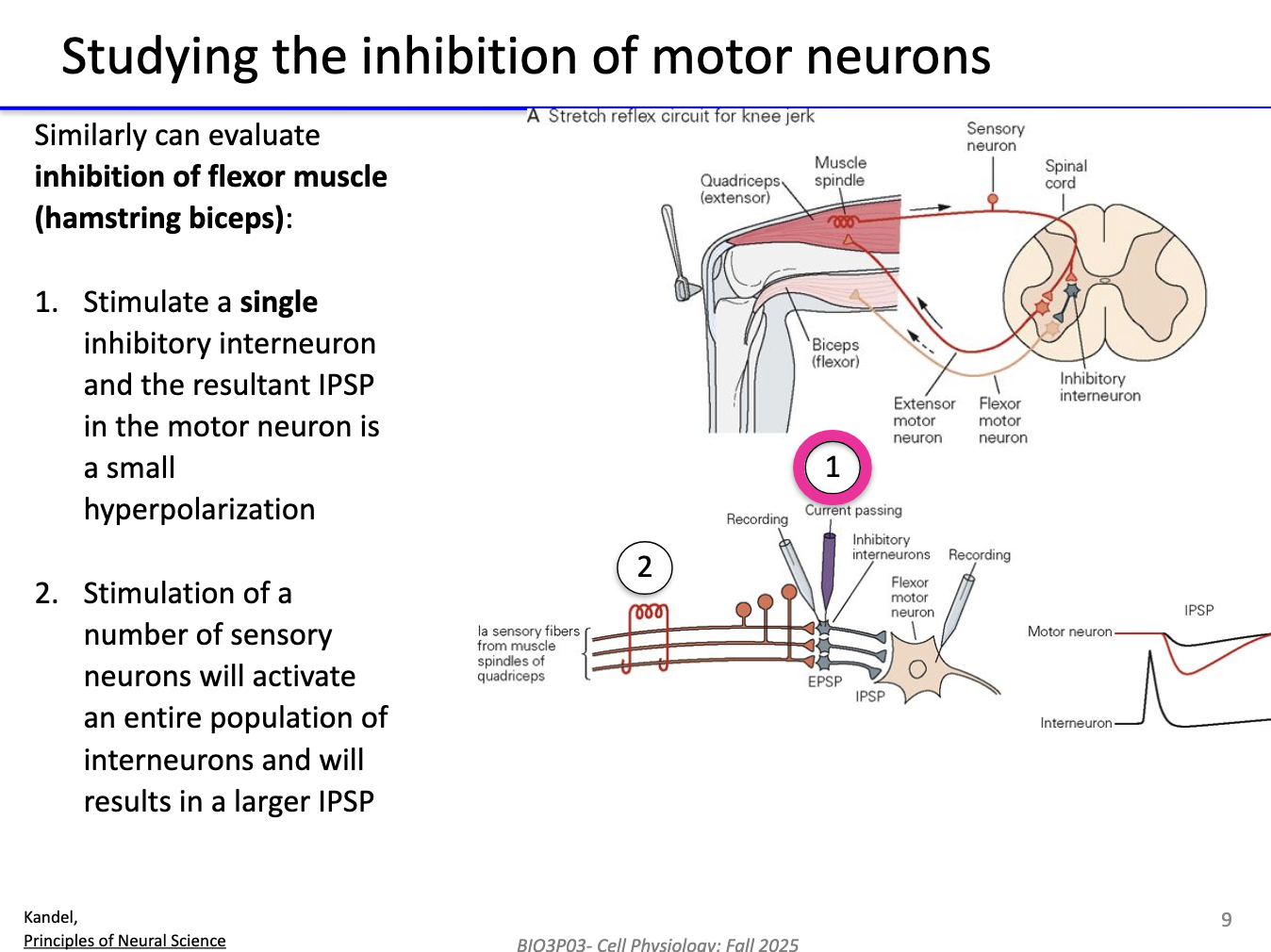
What are EPSPs and what causes them?
EPSPs: depolarizations that increase likelihood of postsynaptic AP.
Caused by neurotransmitter release → binds to postsynaptic receptors → membrane depolarization.
Single EPSPs: small (<1 mV), below threshold.
Thousands of EPSPs can sum in space & time to reach threshold.
Ion flux: likely Na⁺ influx (sometimes Ca²⁺).
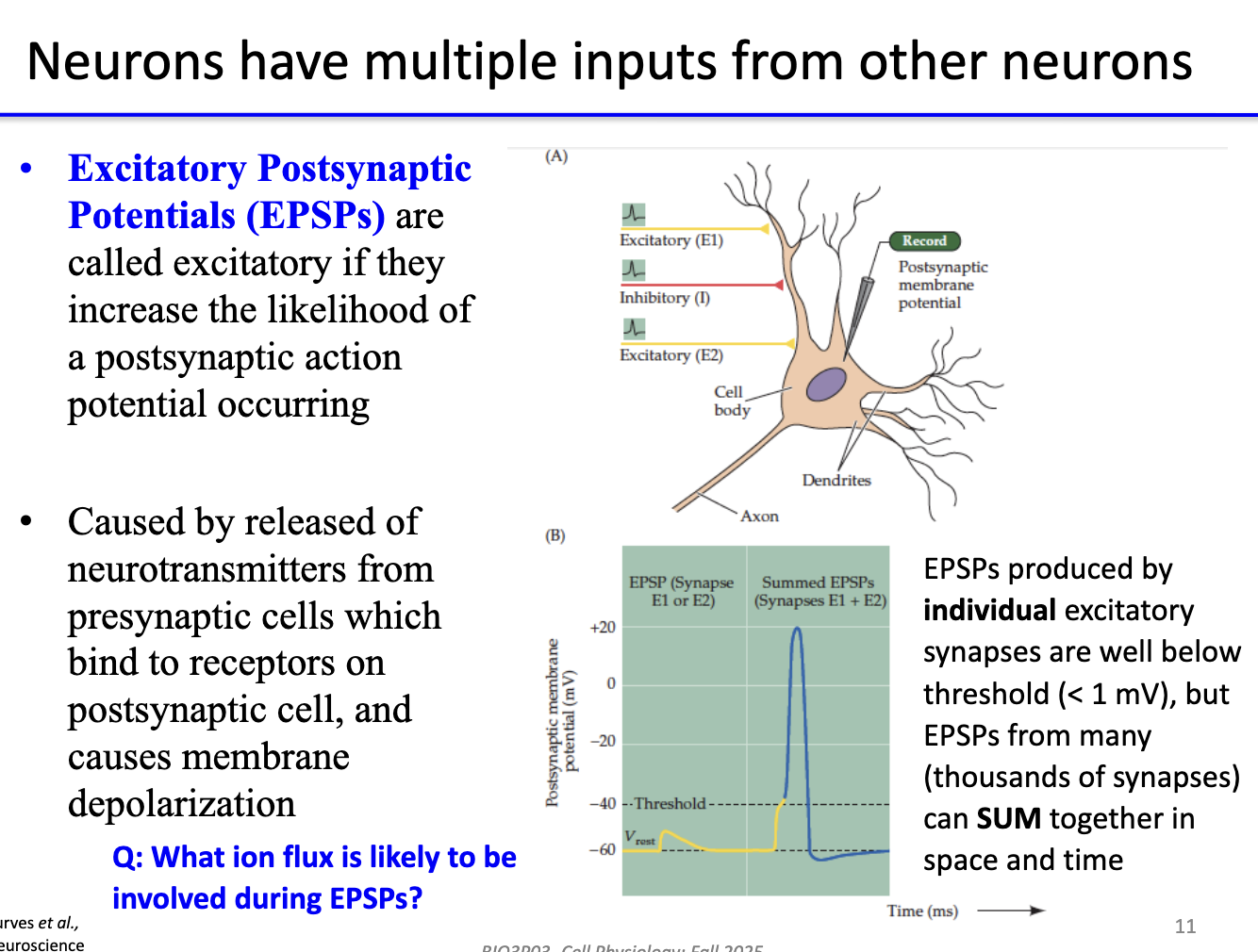
What are IPSPs and how do they affect postsynaptic neurons?
IPSPs: hyperpolarizations that decrease likelihood of AP.
Can sum with EPSPs → reduce EPSP amplitude.
Can reduce probability of reaching threshold.
Ion flux: likely Cl⁻ influx or K⁺ efflux.
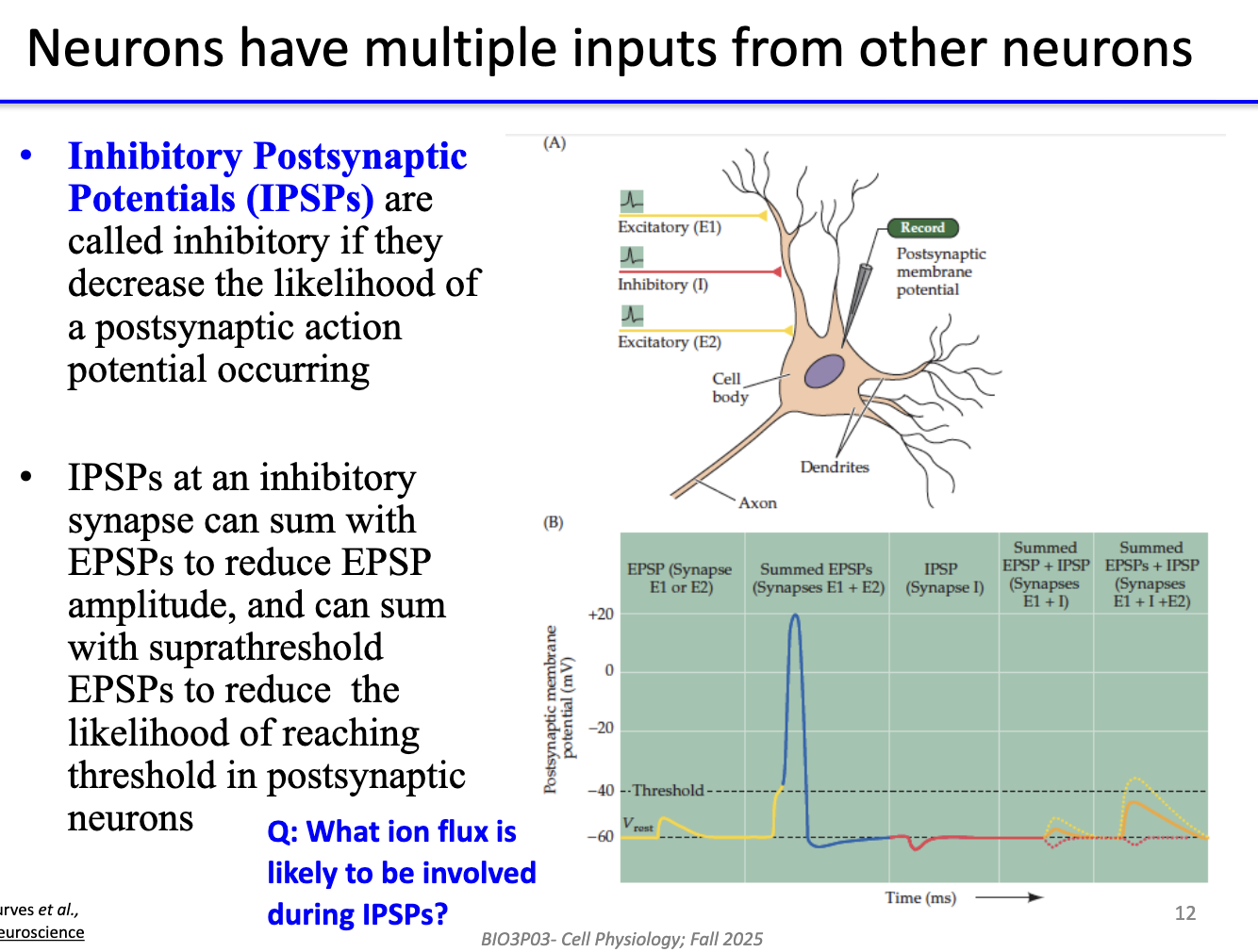
How do EPSPs and IPSPs interact to determine if an action potential occurs?
Balance between excitatory (EPSP) and inhibitory (IPSP) inputs changes over time.
Neurotransmitters bind receptors → open/close ion channels → change conductance → alter current flow.
Summation of all inputs determines membrane potential → whether threshold is reached → AP generation.
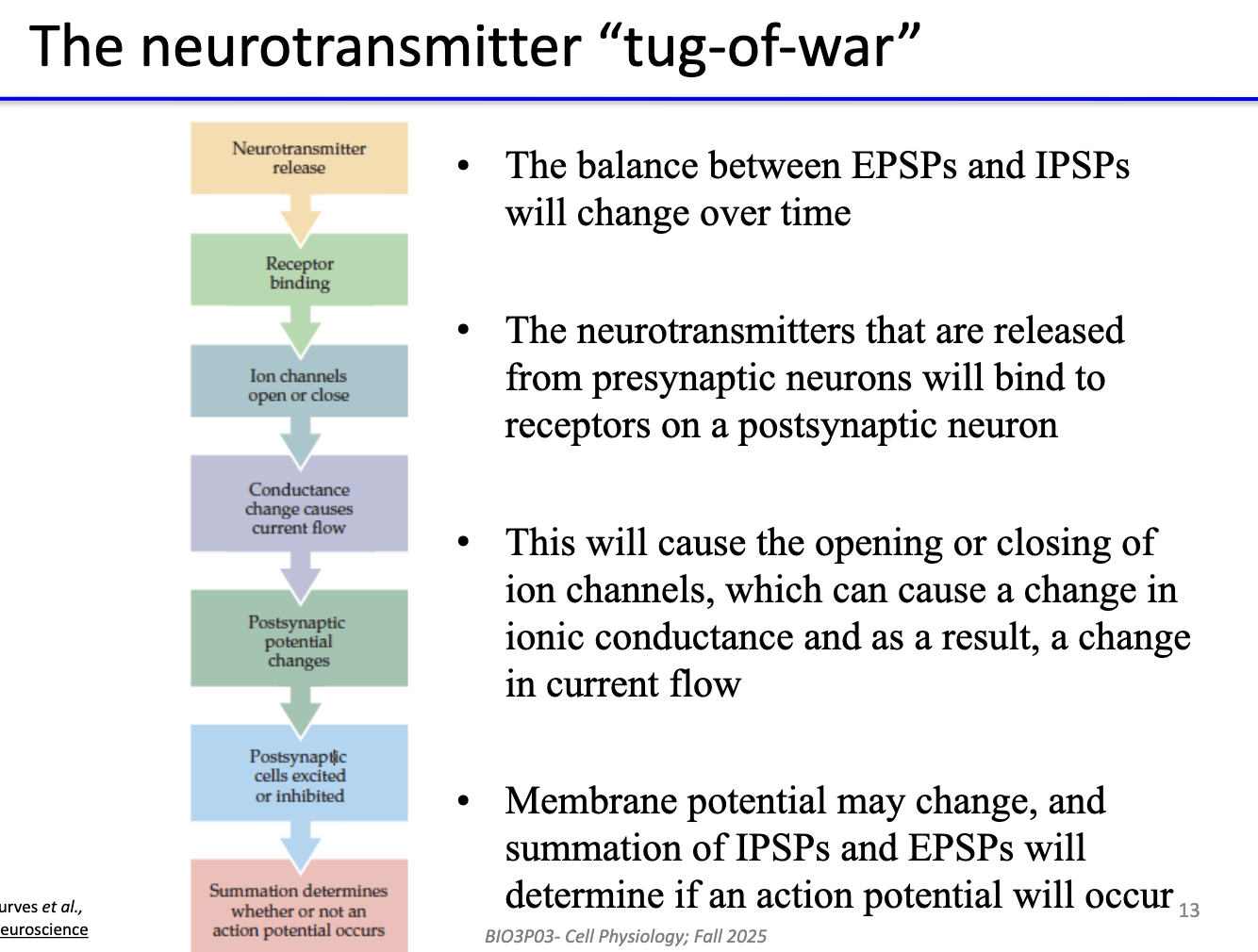
How do spatial and temporal summation influence action potential generation?
Spatial summation: EPSPs from different synapses on dendrite combine → may reach threshold.
Temporal summation: repeated EPSPs from same synapse in quick succession overlap → may reach threshold.
IPSPs can counteract EPSPs and prevent firing.
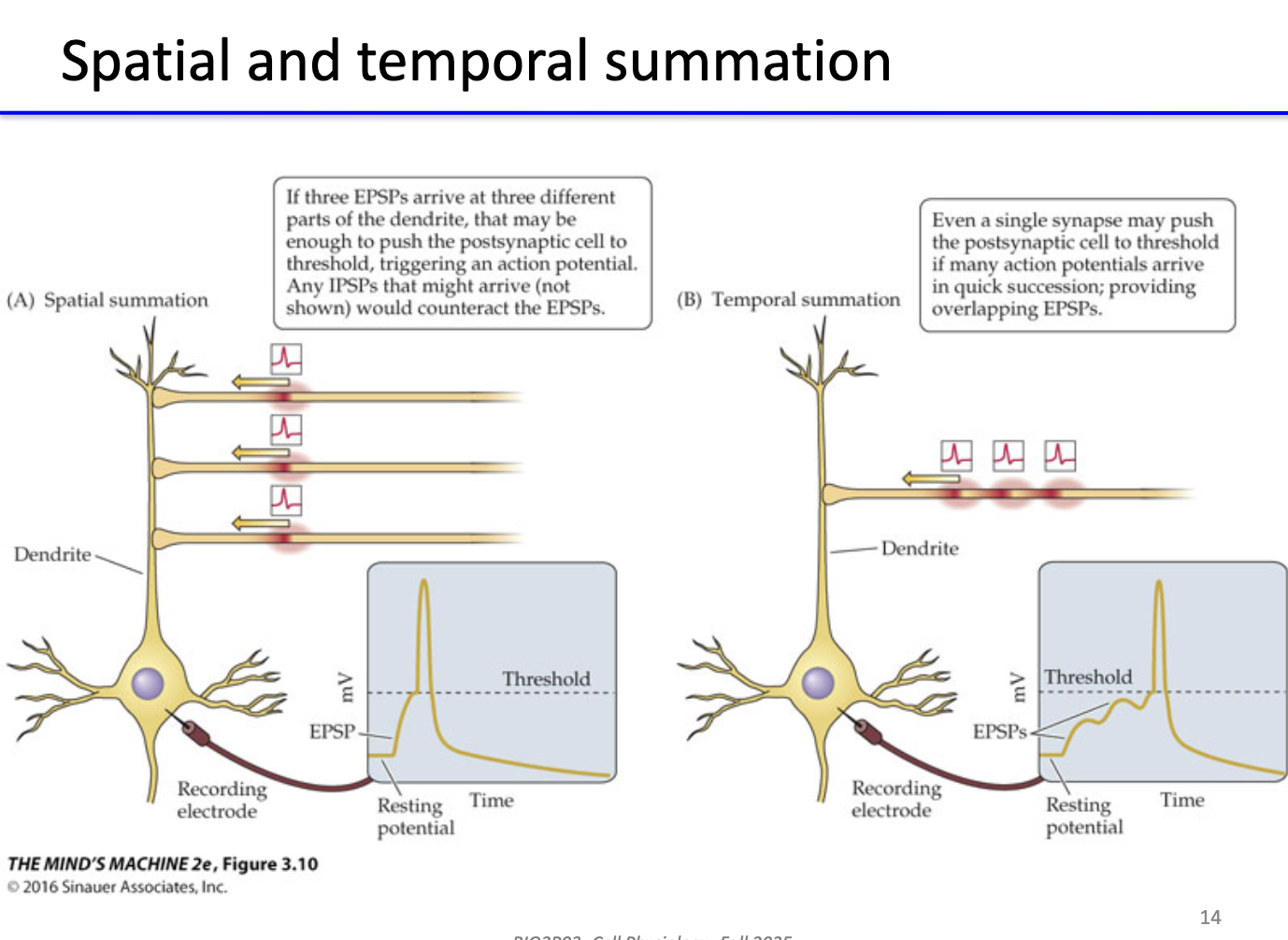
How do postsynaptic currents spread, and where is integration most effective?
Currents spread electrotonically toward axon hillock (spike initiation zone).
Potentials decay with distance from synapse.
Axon hillock: lower threshold, high density of voltage-gated Na⁺ channels → key site for AP initiation.
If current starts at point A (further) vs point B (closer), A decays more.
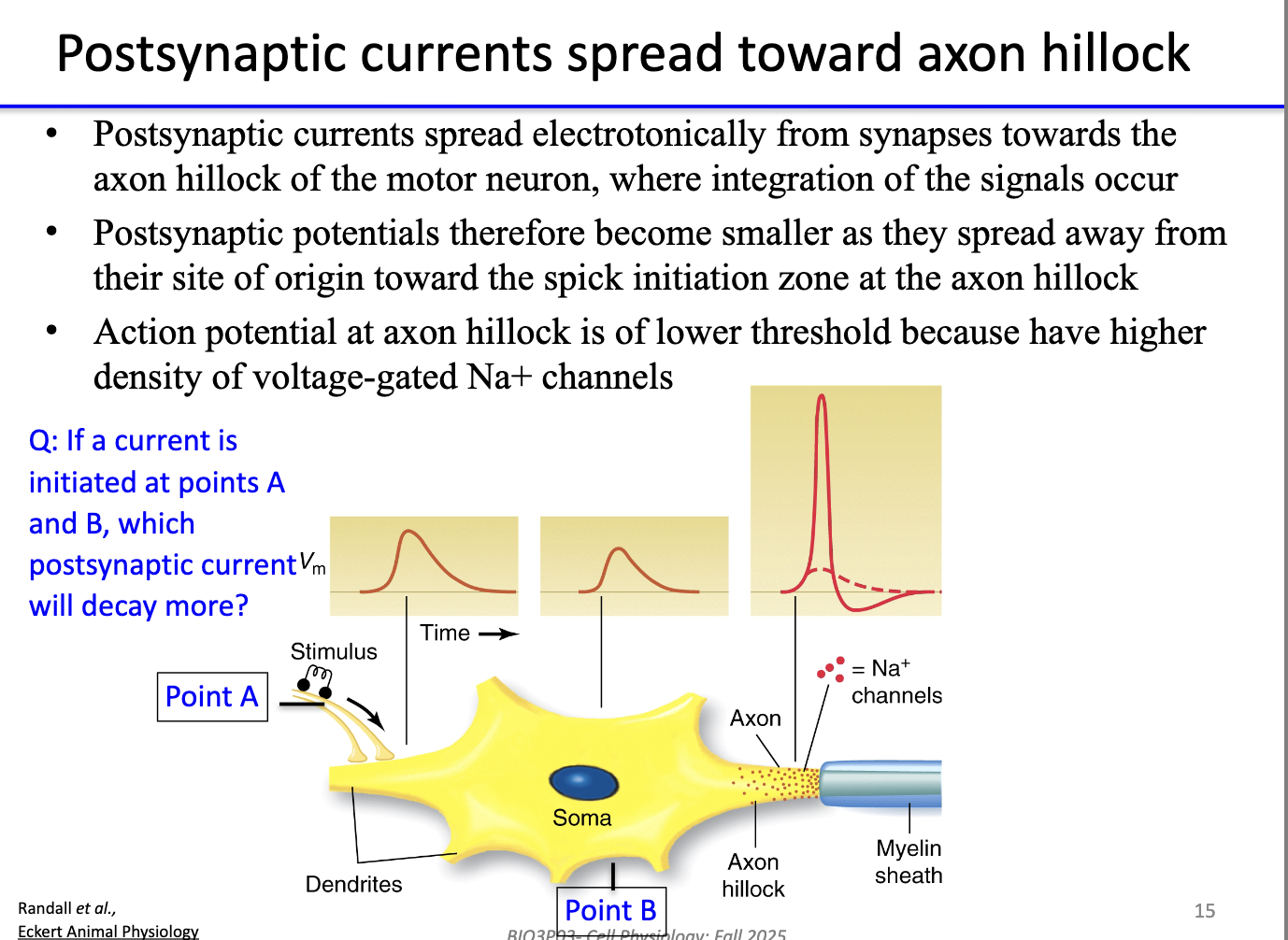
How does synaptic integration influence action potential firing frequency?
Summed inputs → if large enough depolarization → neuron fires AP train.
AP frequency proportional to degree of depolarization at spike-initiation zone.
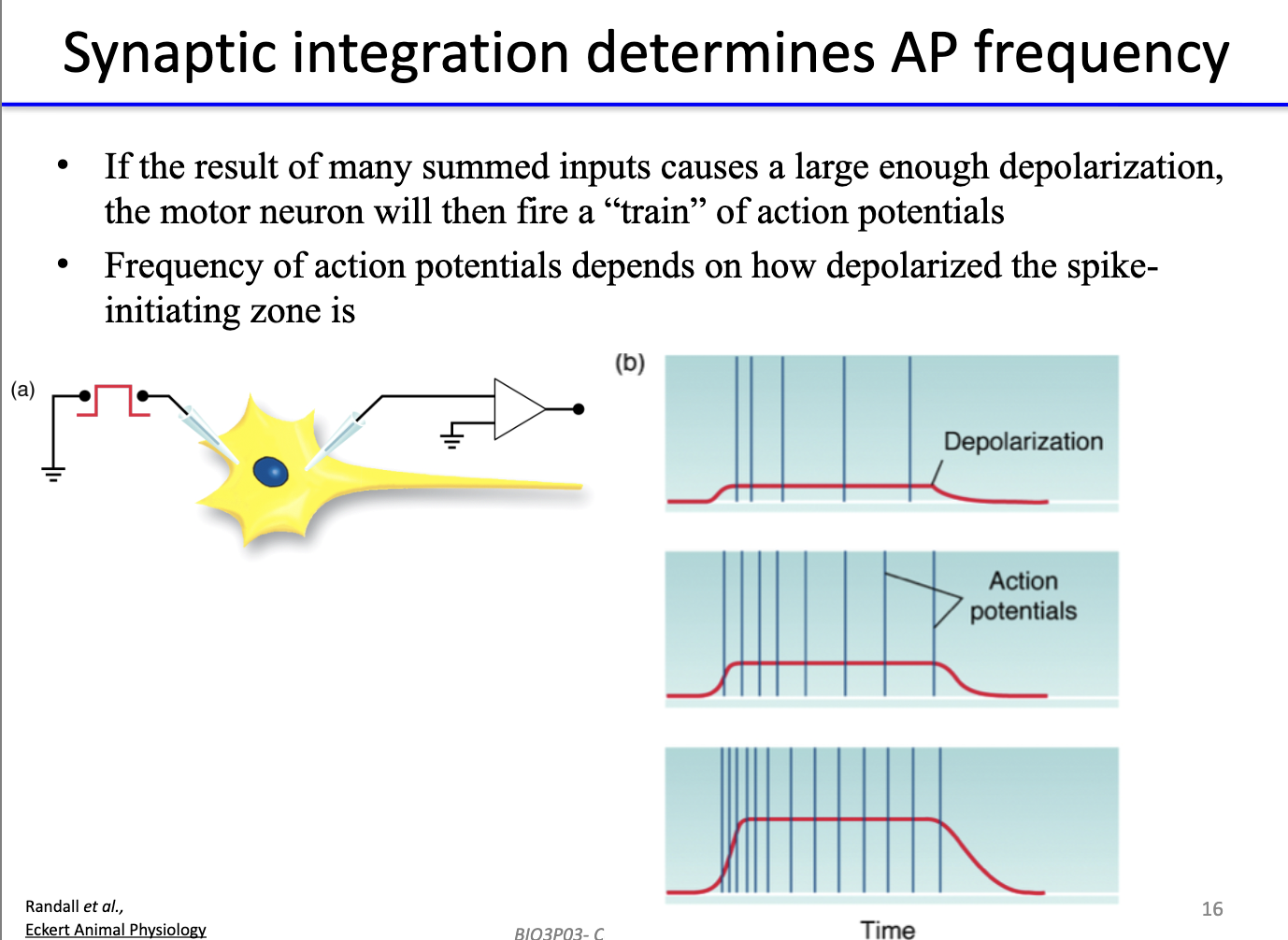
What happens to firing frequency as depolarization increases?
Increased depolarization → more action potentials.
Beyond a certain depolarization, firing rate plateaus (max frequency reached).
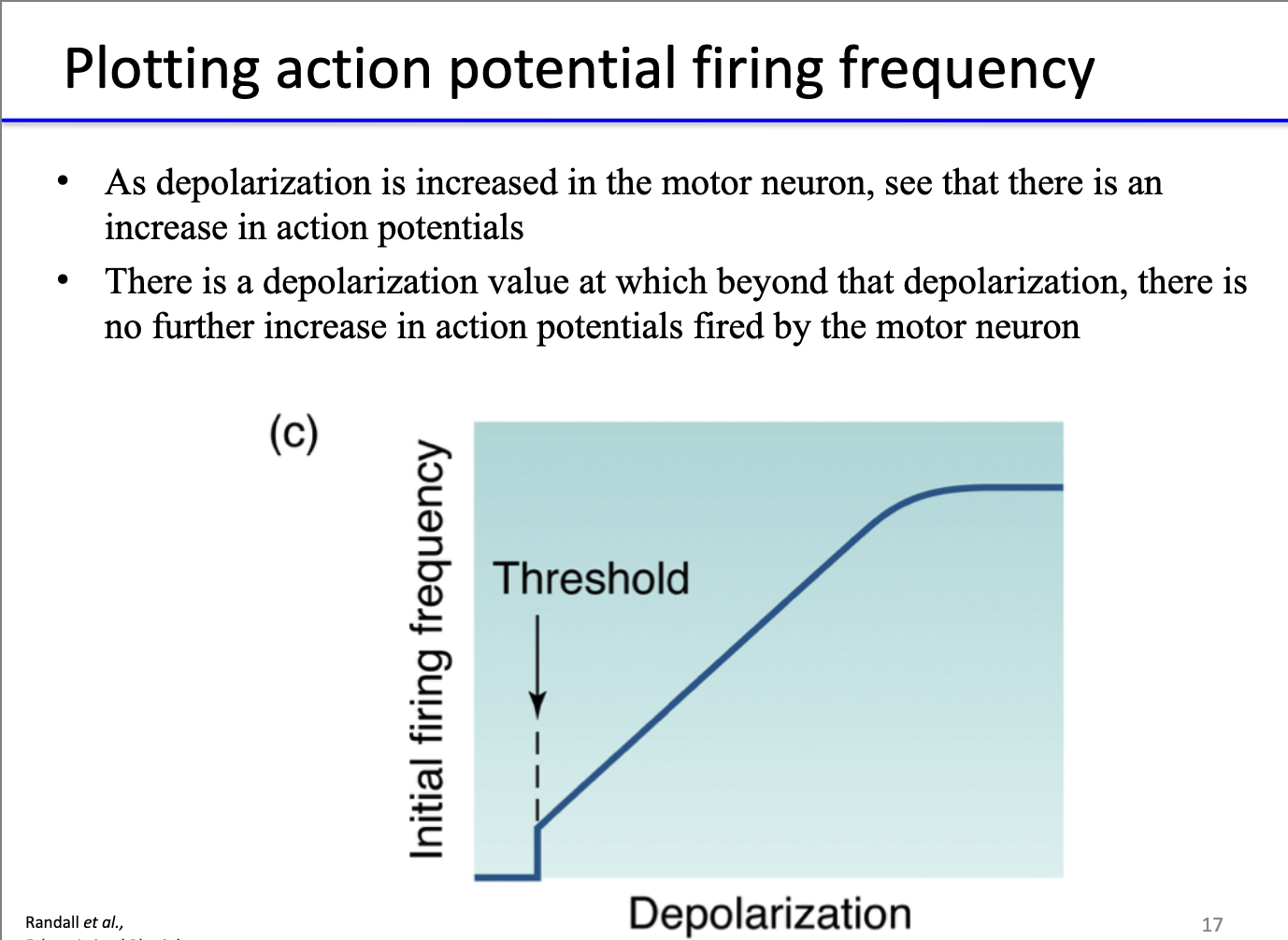
What does a single motor neuron action potential produce in muscle?
One motor neuron AP → single muscle twitch.
Twitch lasts up to ~120 ms (brief contraction).
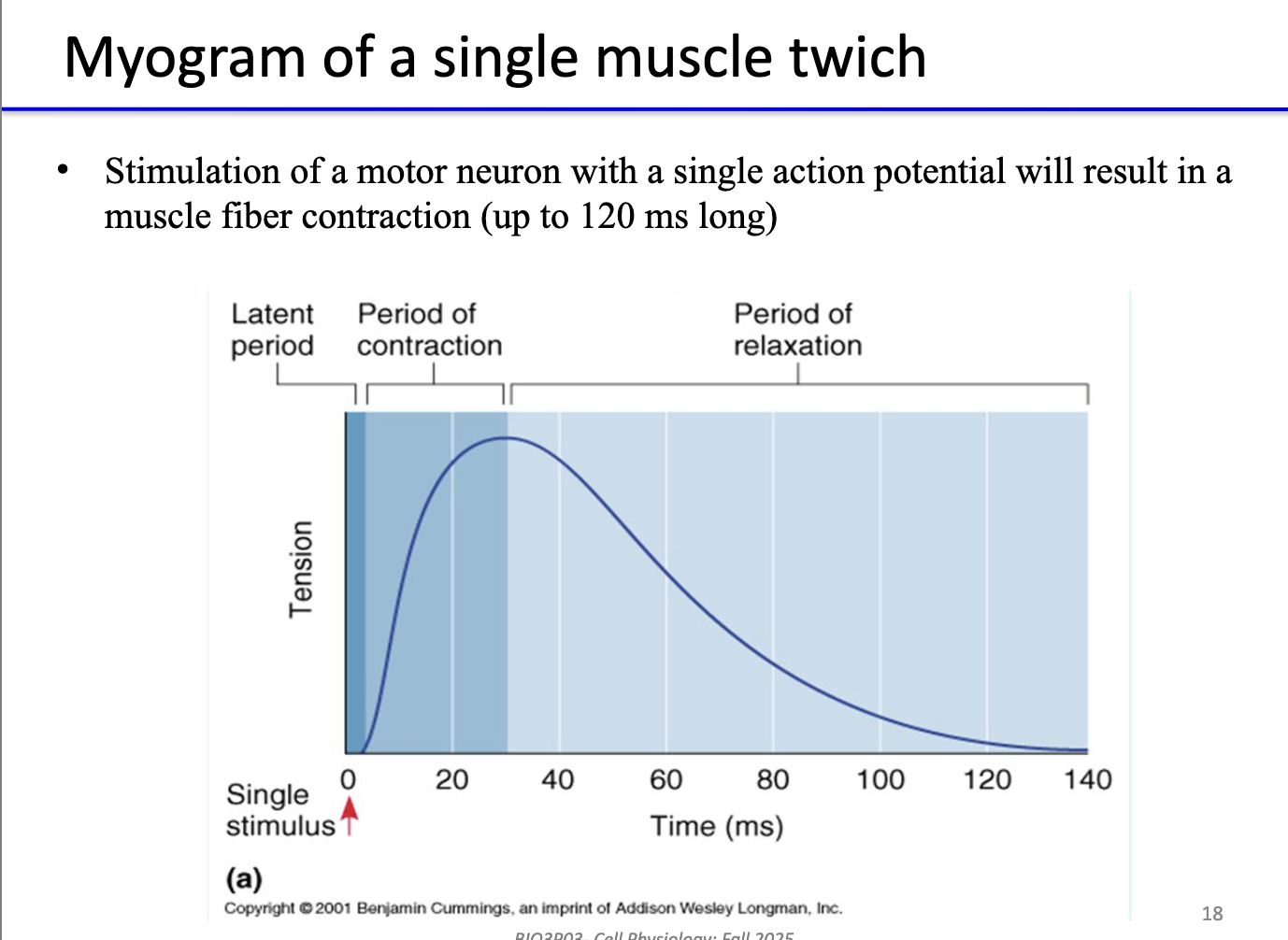
What is wave summation and how does it lead to tetanus?
Wave summation: repeated stimulation → less relaxation time → stronger contraction.
Caused by high AP frequency in motor neuron.
Tetanus: sustained contraction (no relaxation) due to rapid stimuli.
Useful for sustained force (e.g., lifting), but can cause cramps if uncontrolled.
